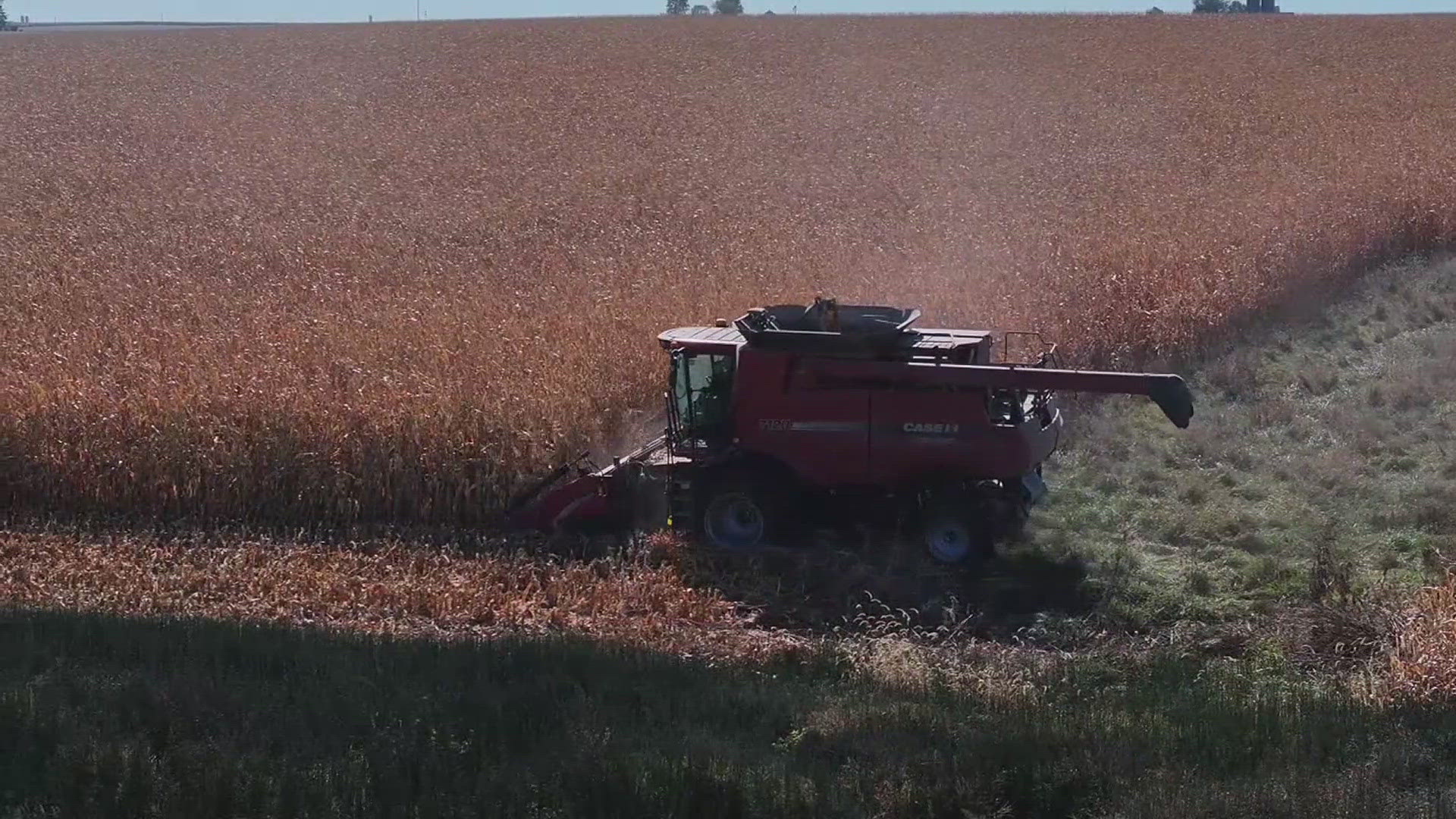ELVIRA, Iowa — The Lamp family knows farming is unpredictable.
Whether its a breakdown on their first day of corn harvest, or changing weather and commodity prices, Perry and his daughter Beth are ready for all variables.
"Usually we start the day and dad goes, 'So what are we going to break today.' We just know it's inevitable," 22-year-old farmer Beth Lamp said. "Things happen, but it's okay."
The week the Iowa Department of Agriculture and Land Stewardship (IDALS) reports 68 percent of corn is harvested in the state and soybean harvest has reached 91 percent. Both are above last year's average.
Last night, the Lamp family finished the soybean harvest and has approximately 550 acres of corn left in the field.
IDALS reports it is the second driest October in the last 152 years.
However, the Lamps say there are advantages and disadvantages to the dry weather.
"Things have been going well with harvest. It's been dry so we're able to keep going," Beth who works alongside her dad and graduated from Western Illinois University this spring said.
She says low moisture also keeps down fuel costs for drying grain for storage. "We don't think we'll be using as much LP (liquid propane) this year," she said. "We'll probably transfer what we would use to in pricing for LP to move to the hog building."
However, high winds add a dangerous element to the weather. "We had to stop early the other night just because we couldn't see with the dust just because it is so dry.” The high winds also make it easier for fires to start.
“If you get a hot baring or a hot engine, there is a great chance for a combine fire or a field fire," Perry said.
In addition to mostly ideal weather, Perry said his yields are averaging well this year.
"We were running round 70 (bushels per acre) on beans," he said. “We are happy with 240 (bushel per acre on corn ) in our areas. We are running almost close to 300 (bu/a) in some spots.”
Although yields are high, Perry and other farmers say low commodity prices and high input costs still make it a tough year for some.
"It’s going to be a pretty tight year," he said. "Hopefully we see a good rally, there is just so much we are sitting on."
Perry said that farmers have told him grain elevators in the area have adjusted hours throughout the fall because of an excess of grain. "The elevators are bursting at the seams and most of the on-farm storage is already full," he said.
He suggested that increased opportunities for export markets would help local farmers.
“I think a lot of it is going to depend on how the election goes. I would like us to see where we are getting markets more overseas," he said. "We import a lot of stuff from China. I would like to see us get just as much exported back to them."
He says changes in demand could make a big impact for future years. “Agriculture is cyclical and I think we are kind of in downturn right now just because commodity prices are where they are at," he said.

